Unknown Weapons of the Samurai: The Forgotten Warrior Arsenal from Feudal Japan
The Katana sword was considered as the Samurai soul. That is why some people treat Samurai and katana as synonymous words. It is true that a Samurai and his sword is inseparable, but believe it or not, there were times when the Samurai used a variety of different weapons aside from their swords .
The Samurai were trained to be constantly aware of their surroundings as well as changing circumstances on a daily basis. They believed that a person should always be prepared to defend himself whenever unpredictable danger comes. The Samurai were ready to fight 24 hours a day, 7 days a week.
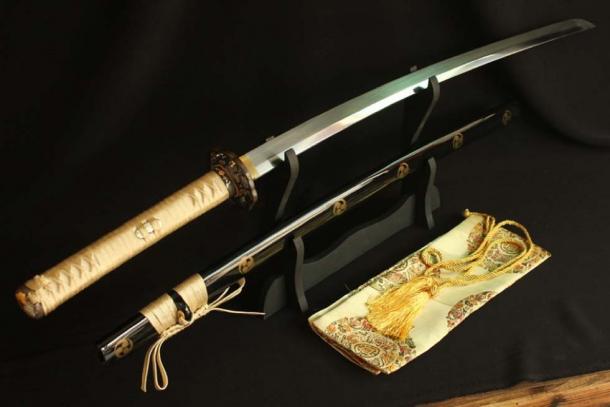
A modern full tang Katana. (Image: katanasforsale.com)
There were cases when a sword is not the ideal weapon for the Samurai, or when it was not so practical against unforeseen attacks. The Samurai and Chonin classes of feudal Japan relied on alternative and improvised weapons for personal defense during unpredictable events.
Daily Items Made Deadly
The Samurai used common objects creatively. Many of these items were used for daily activities. They weren’t primarily used as weapons, but the Samurai found a way to make them usable for self-defense. These objects were called mijikimono. Items such as rice cooking pot lids, tobacco pipes, decorative hairpins, and portable writing sets all had self-defense purposes during feudal Japan.
Samurai, merchants, and artisans used to carry common items in their obi (sash) including pipe cases, brush case, ink, and utensils. These items could also be used for thrusting, striking, or blocking an opponent’s weapon.
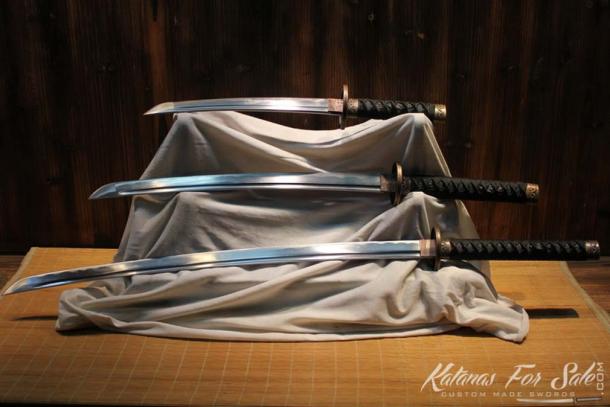
Samurai used a variety of swords. Kantana, (bottom) Wakizashi, (middle) and Tanto (top). (Image: katanasforsale.com)
Here are some of the Samurai weapons that are unknown to many. The list below includes both common everyday items and unknown or forgotten weapons used by the Samurai class of feudal Japan.
Kabutowari
The kabutowari is also called the helmet or skull breaker. This blade is designed to split the helmet of an opponent. It resembles a jitte in some aspects. The Samurai used to carry this weapon as a side-arm.

Antique Japanese kabutowari with a nihonto style of handle. ( CC BY-SA 3.0 )
Kanabo
The kanabo refers to a metal stick. Other versions of this weapon are made of wood or iron. It is a war club that has spikes or studs. It was used by the Samurai to smash the armors and warhorses of their enemies. Since it’s a heavy weapon, mastery of balance and strength is a required skill in order to handle it properly.
Kanzashi
A kanzashi refers to a traditional hair ornament. Women who belong to Samurai families were trained to defend themselves using this concealed weapon. A kanzashi is usually several inches long. It keeps a woman’s hair up, but its metal pins can be used to pierce an attacker’s throat or chest in case of an emergency.
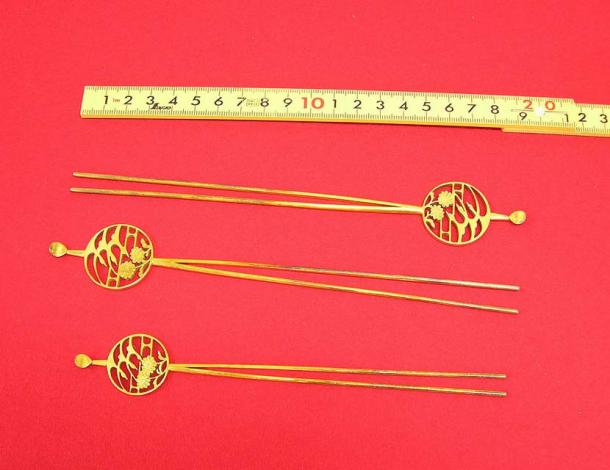
Gold plated brass prong kanzashi. Period unknown. ( Public Domain )
Kiseru
During the Edo period, the kiseru or tobacco pipe is common to members of the Samurai and Chonin class. A kiseru is usually carried in a case called kiseruzutsu, which was commonly made of wood, leather, woven straw, animal horn, or bamboo. Kiseru that are made from precious metals and decorated with intricate details and artwork were considered a status symbol during feudal Japan. Kiseru with hard rods and metal ends were used as a stabbing and thrusting weapon for emergency self-defense purposes.
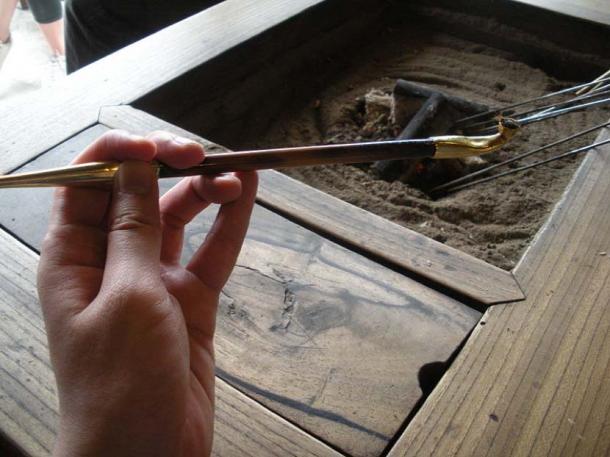
Kiseru, Japanese smoking pipe. ( Public Domain )
Kenka kiseru, a thicker and stronger version of the typical tobacco pipe, was used as an effective weapon for striking and hitting an opponent. It was often made with brass or cast iron.
Kogai
The Samurai’s Tanto or Wakizashi Saya usually included a second slot for a Kogai. A Kogai refers to a skewer that has a blunted tip. Some people believe that the Kogai was used to thrust through an opponent’s ear after the head was removed, so that everyone would know who won the battle.
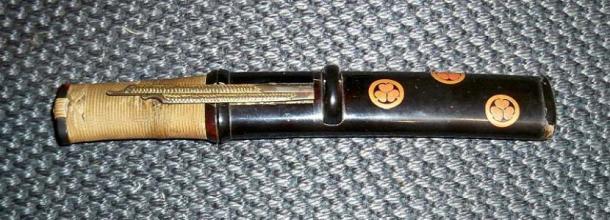
Antique Japanese tanto koshirae showing the kogai. ( CC BY-SA 3.0 )
Kogatana and Kozuka
The kogatana refers to a small utility blade that was usually carried in a tiny slot near the top of a Tanto or Wakizashi Saya (scabbard). One of its sides is polished flat while the other side has a sharp edge. It also has a small tang that fit inside the kozuka or handle. The Samurai used the Kogatana as a small dagger or a general purpose knife. They also used it as an alternative to shuriken or throwing knives to blind or distract their attackers during battles.
Antique Japanese Edo period yari tanto, a spear yari mounted as a tanto, this yari tanto is mounted in a koshirae, there is a small utility knife kogatana with an intricate woven gold metal handle kozuka and a small 2-piece utility tool kogai. ( CC BY-SA 3.0 )
Kusari-fundo
The kusari-fundo refers to a short chain with a steel weight attached to either or both ends. Its length usually ranges between two and three feet. Many people believe that this multi-purpose weapon was designed to counter long-sword techniques without the need of another sword. The kusari-fundo is easy to construct and conceal.
- Man Steals Samurai Sword From History Museum and Launches Attack Outside Taiwan Presidential Office
- The Amazing Story of Yasuke: The Forgotten African Samurai
- Sensu and Tessen in Combat: A Japanese Fan Became a Deadly Weapon In the Right Hands
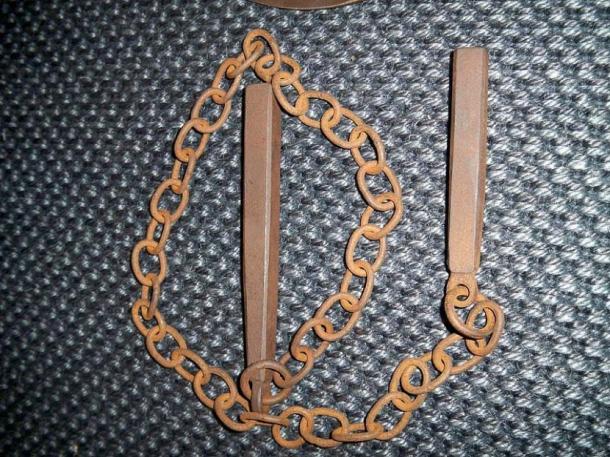
Japanese manriki or kusari-fundo. ( CC BY-SA 3.0 )
Jitte
The jitte refers to a steel rod that is fitted with a handle. It has either one or two hooks along the edge of its blade. The Samurai used this weapon to catch a felon’s sword blade. That way, the felon would be disarmed and taken alive.
Shakuhachi
The shakuhachi refers to a Japanese bamboo flute. The music produced when playing the shakuhachi was associated with meditation and Zen Buddhism. A long and stout shakuhachi can act as a truncheon.

A shakuhachi ( 尺八), a Japanese bamboo flute, blowing edge up. ( Public Domain )
Tobikuchi
The tobikuchi is similar to a fireman’s axe. Its blade has a shape that is similar to a bird’s beak. It was used to hook and pull-down screens and walls. Its sharp pointed blade was used to smash round tiles flat and create footholds on slippery roofs. Its longer pole arm version was used to pull down the main support beams of a building.
Yatate
During feudal Japan, the yatate or portable writing sets were carried by the Samurai in their quivers where they also put their arrows. The Samurai used the yatate to write reports and letters while they were in the battlefield.
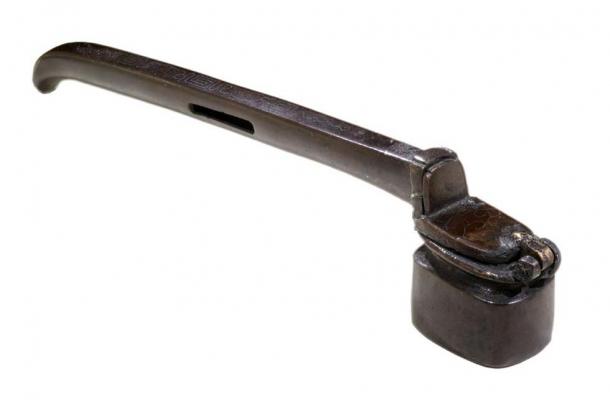
A typical Yatate. ( CC BY-SA 2.0-fr )
Top image: Antique Japanese daishō, the traditional pairing of two Japanese weapons which were the symbol of the samurai, showing the traditional Japanese sword cases ( koshirae) and the difference in size between the katana (bottom) and the smaller wakizashi (top).
Related Post
A shocking documentary proves that mermaids do exist
SHOCKING Revelation: Thuya, Mother of Queen Tiye, Was the Grandmother of Akhenaten and Tutankhamun—What Ancient Egyptian Secrets Did She Leave Behind?
Breaking News: Astonishing Discoveries at Karahan Tepe Confirm an Extraterrestrial Civilization is Hiding on Earth, and NO ONE Knows!
Breaking News: Researchers FINALLY Discover U.S. Navy Flight 19 After 75 Years Lost in the Bermuda Triangle!
NASA’s Secret Investigation: Uncovering the Astonishing Mystery of the UFO Crash on the Mountain!
Explosive UFO Docs LEAKED: Startling Proof That Aliens Ruled Ancient Egypt!